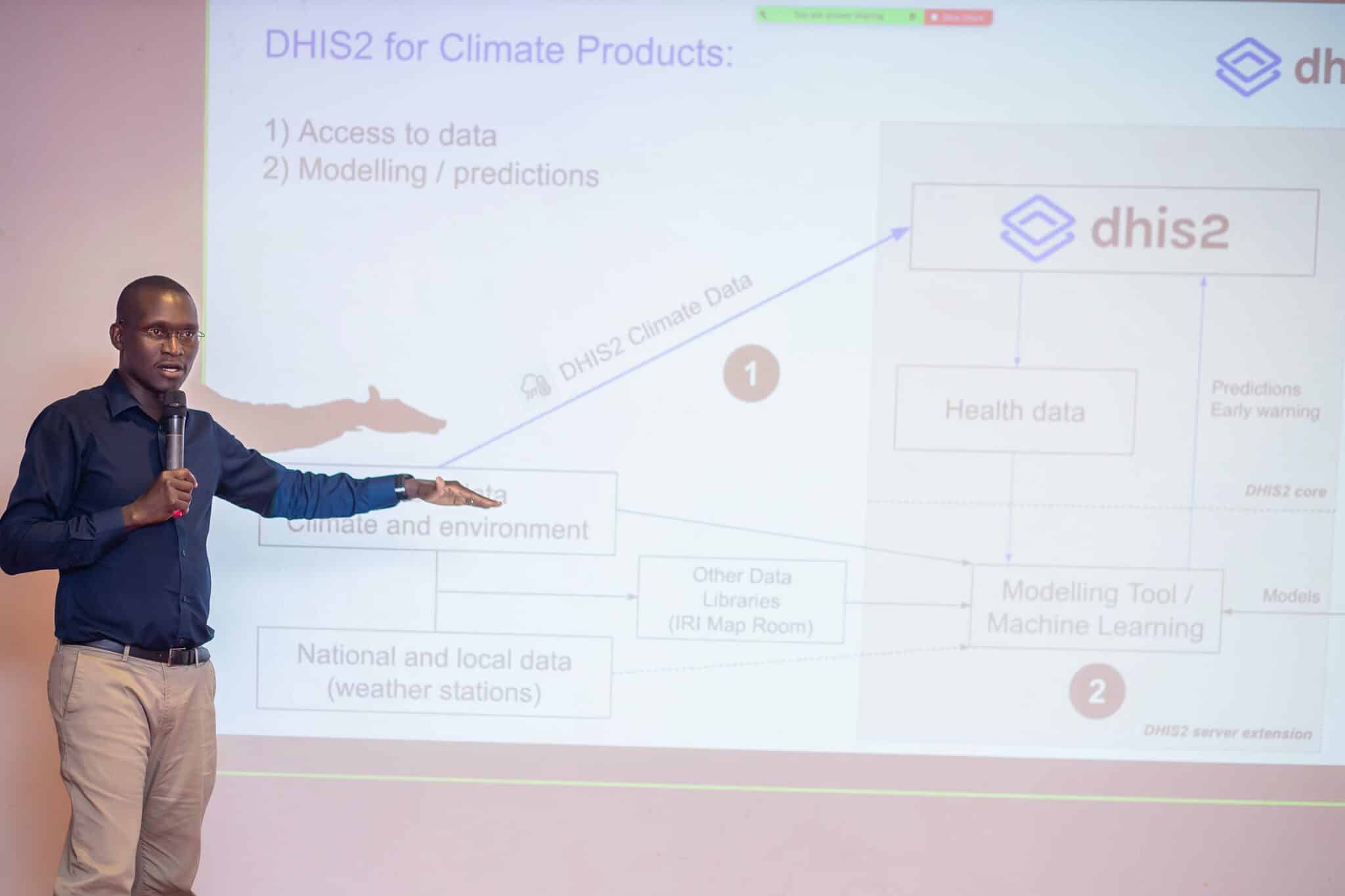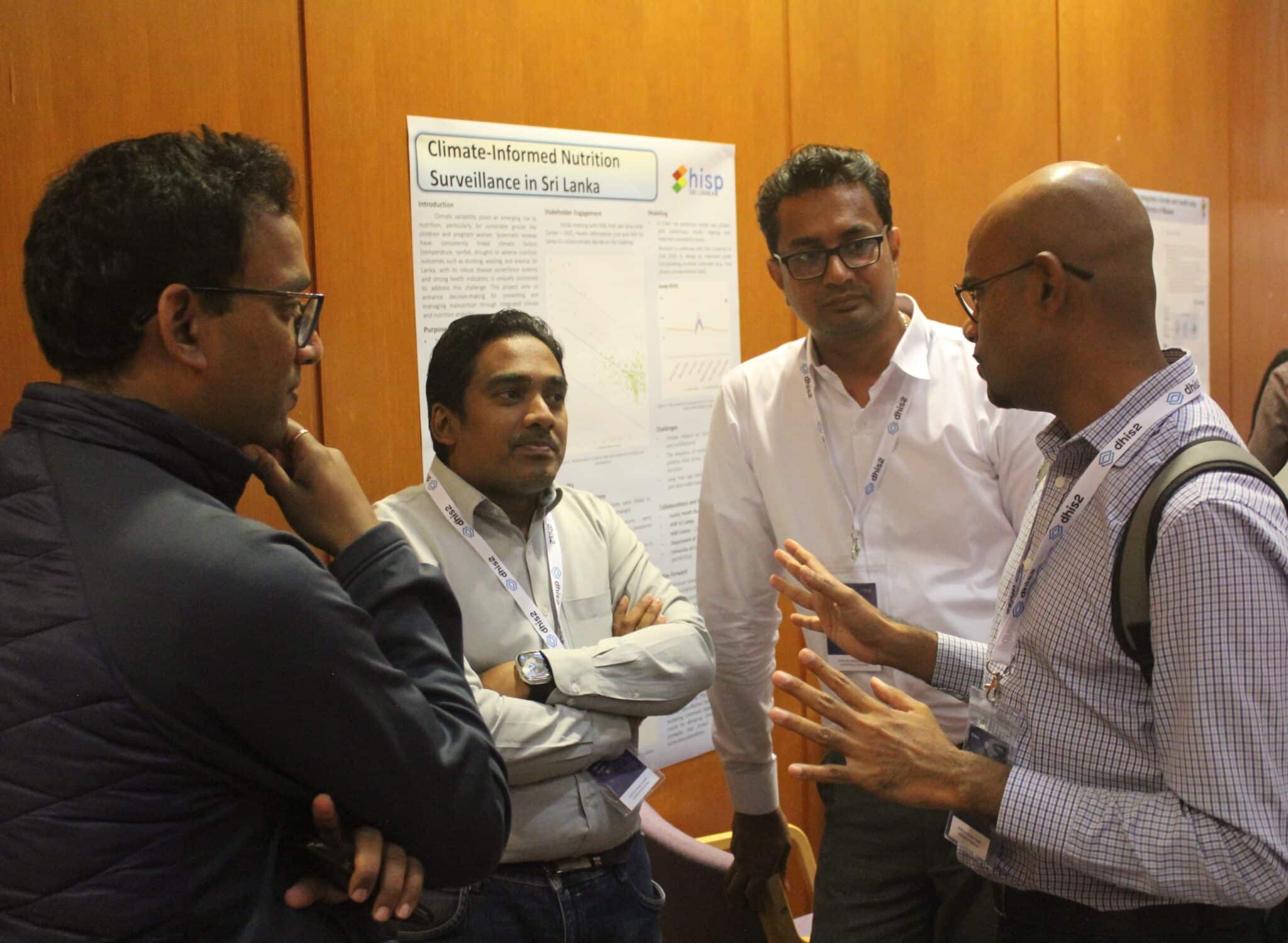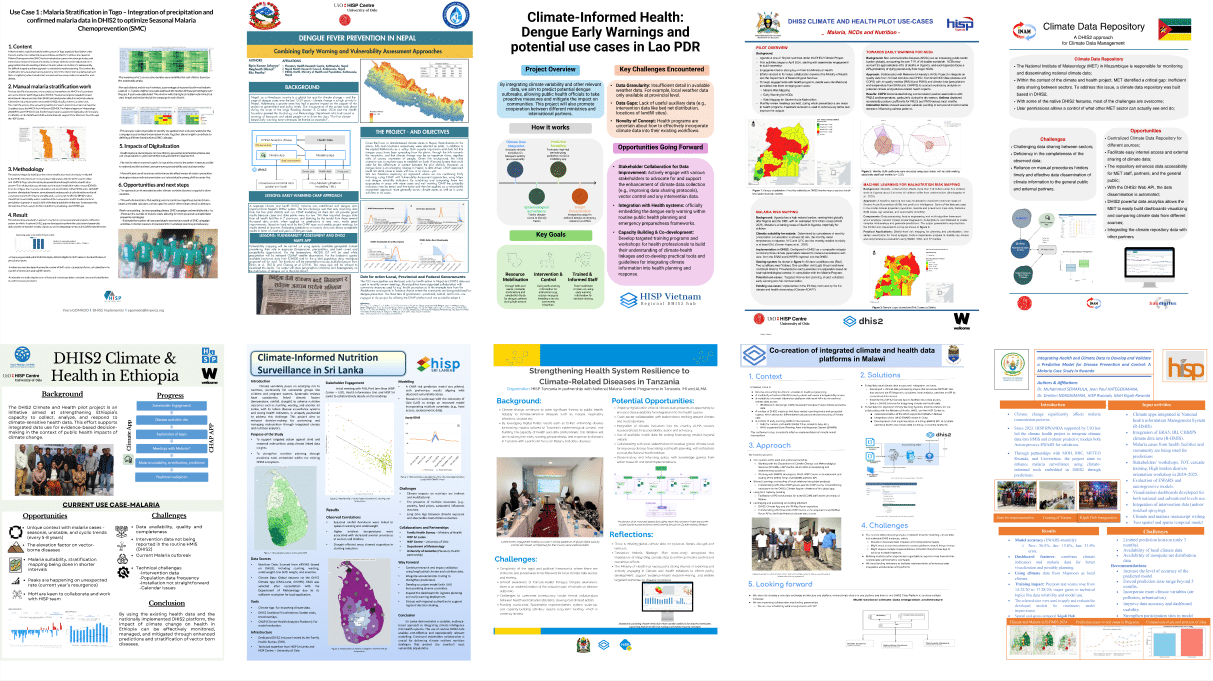Cette page a été traduite automatiquement et pourrait contenir des erreurs

Research Round-Up : Extension et renforcement des systèmes de surveillance DHIS2 de routine pour les réponses au COVID-19 en Sierra Leone, au Sri Lanka et en Ouganda.
Un article de Carl Kinkade, Scott Russpatrick, Rebecca Potter, Johan Saeboet al. publié dans le CDC EID Journal explique comment le DHIS2 a été utilisé pour mettre en place des systèmes de surveillance plus efficaces pour le COVID-19 en s’appuyant sur les leçons tirées de l’épidémie d’Ebola.
L’épidémie d’Ebola en 2014 a suscité des discussions régionales et mondiales sur la mise en place de systèmes de surveillance des maladies multisectoriels et intégrés capables de relever les nouveaux défis en matière de soins de santé. Le programme mondial de sécurité sanitaire (Global Health Security Agenda – GHSA), qui regroupe plus de 70 pays, a été mis en place pour renforcer la surveillance et la réponse aux maladies en utilisant des données en temps réel pour orienter la prévention, la détection et la réponse aux épidémies. À la suite de ces discussions, de nombreux pays à revenu faible et intermédiaire se sont engagés à améliorer leurs systèmes de surveillance nationaux avec le soutien d’agences multilatérales telles que le Fonds Mondial, Gavi et la Banque mondiale. En outre, le financement d’agences américaines telles que le PEPFAR, le CDC et le PMI a facilité l’amélioration de la plate-forme DHIS2 de base, qui était déjà utilisée comme plate-forme SGIS nationale ou à des fins de surveillance dans la plupart de ces pays. Ces améliorations comprennent des fonctionnalités permettant de générer des seuils prédictifs de maladie sur la base de données historiques et de créer des alertes par courrier électronique, SMS et autres moyens pour une notification en temps réel plus efficace.
Au début de la pandémie de COVID-19 en 2019, 25 pays avaient adopté le DHIS2 pour la surveillance nationale et mis-en-œvre la notification électronique systématique des maladies prioritaires, conformément à la stratégie de surveillance intégrée des maladies et de riposte (IDSR) de l’OMS AFRO. Le nombre de pays utilisant la plateforme DHIS2 pour la surveillance du COVID-19 a rapidement augmenté pour atteindre environ 55 en 2020 après la pandémie. Le DHIS2 s’est révélé un outil électronique efficace pour la gestion de l’information sanitaire, avec un accès aux données désagrégées depuis l’unité organisationnelle la plus basse jusqu’au niveau décisionnel. La réussite de l’extension du DHIS2 pour la surveillance du COVID-19 et la réponse aux situations d’urgence est attribuée en partie à trois facteurs clés :
- Une technologie open-source flexible et extensible qui permet l’innovation locale.
- Une communauté de pratique mondiale inclusive et participative pour partager les connaissances et les approches entre les pays et les régions.
- Investissements à long terme dans les capacités locales de conception et de gestion du système, avec une autonomie totale des acteurs gouvernementaux sur le système.
Cette étude décrit comment les investissements antérieurs dans les systèmes de surveillance basés sur le DHIS2 au Sri Lanka, en Sierra Leone et en Ouganda ont permis à chaque pays de réagir rapidement et d’adapter leurs systèmes DHIS2 existants pour répondre aux besoins de la pandémie de COVID-19.
Sierra Leone : Utilisant le DHIS2 pour le SGIS depuis 2008, la Sierra Leone a intégré la notification électronique des données sur les maladies au niveau des établissements, conformément au cadre IDSR de l’OMS. Les rapports électroniques hebdomadaires sur 26 maladies prioritaires ont débuté en 2016 et ont été étendus à l’ensemble du pays en 2019 avec le soutien du CDC, de l’OMS et d’e-Health Africa. Le pays a également mis au point un système de surveillance électronique des maladies basé sur les cas (eCBDS) en s’appuyant sur l’infrastructure du SGIS. Ces systèmes ont été modifiés en Sierra Leone lors de l’épidémie de COVID-19 en incorporant les variables recommandées par l’OMS dans les modèles existants de surveillance des maladies respiratoires aiguës. L’institutionnalisation de la plateforme DHIS2 pour la surveillance des maladies et les plans coordonnés pour l’extension du système à l’ensemble du pays ont été les clés de ce succès.
Sri Lanka : Grâce à une importante capacité locale développée au cours de la décennie d’utilisation de DHIS2 pour divers programmes de santé dans le pays, le Sri Lanka a été en mesure de modifier une instance de DHIS2 en deux jours, afin d’enregistrer tous les voyageurs internationaux arrivant dans le pays et de les surveiller pour détecter les symptômes du COVID-19. Cela a aidé le pays à mettre en place un contrôle COVID efficace aux points d’entrée (POE) pour le début du mois de février 2020. Les autorités sri-lankaises ont également fait appel à des développeurs dans le cadre d’un hackathon pour travailler avec un développeur de base du DHIS2, détaché dans le pays par l’UiO, afin d’étendre et d’intégrer la plateforme pour le signalement des cas et la surveillance à l’échelle nationale. En 2 semaines, l’équipe a créé des solutions innovantes et des applications paramétrées pour la recherche de contacts, l’analyse et une couche d’interopérabilité pour l’échange de données avec le système d’information sur l’immigration du pays. L’équipe a également mis-en-œvre des systèmes permettant d’identifier les lits de soins intensifs hospitaliers disponibles en suivant l’occupation des lits dans les établissements désignés. Le Sri Lanka a étendu son système COVID-19 DHIS2 en y incluant un registre électronique de vaccination à l’échelle nationale pour la vaccination COVID. Le système, par le biais de la couche d’interopérabilité, s’appuie sur la plateforme DIVOC pour générer des certificats de vaccins sécurisés et vérifiables. En décembre 2021, plus de 19 millions de personnes ont été inscrites au registre. L’étude de cas du Sri Lanka montre comment les capacités locales, la gouvernance et l’innovation permettent aux pays de s’adapter et de répondre rapidement aux besoins, avec une dépendance limitée à l’égard des interventions de partenaires extérieurs pour mettre en œuvre de nouvelles conceptions.
Ouganda: L’Ouganda a mis-en-œvre en 2013 un eIDSR basé sur le DHIS2 pour la déclaration des cas et la collecte des données de laboratoire pour les maladies prioritaires. Cet investissement précoce a permis d’élaborer un cadre plus générique de conception de la surveillance basée sur les cas, approuvé par l’OMS pour la notification des maladies évitables par la vaccination. Cette conception a servi de base aux progiciels et outils de surveillance COVID-19 développés par UiO. L’Afrique centrale étant un important centre de logistique et de transport, le risque d’une propagation transnationale rapide du virus était nettement plus élevé. Afin d’éviter une interruption paralysante du transport des produits essentiels et de maintenir une surveillance adéquate du COVID-19, le HISP Ouganda a développé un nouveau module POE au sein de l’eIDSR pour contrôler les personnes à toutes les frontières officielles. Les données des voyageurs sont saisies à l’aide de l’application Android Capture du DHIS2 et des tests rapides effectués aux frontières. Les personnes dont le test s’est révélé négatif ont reçu un laissez-passer imprimé contenant leur photo de passeport et un code QR à des fins de vérification. Cela a permis à l’Ouganda de maintenir des frontières ouvertes, essentielles pour le commerce et l’économie au plus fort de la pandémie.
Ces innovations locales ont inspiré les efforts déployés au niveau mondial pour partager les configurations des meilleures pratiques et les rendre accessibles à l’ensemble de la communauté mondiale du DHIS2 afin d’en accélérer l’adoption dans d’autres pays. Par exemple, le module POE développé par le HISP Sri Lanka, ainsi que les configurations pour la recherche des contacts, les rapports et les tableaux de bord, ont été regroupés par l’UiO pour créer le module de surveillance basé sur les cas COVID-19 afin d’aider d’autres pays à démarrer des mises-en-œvre similaires. Ces études de cas montrent que des plateformes, des systèmes et des outils entièrement nouveaux ne sont pas nécessairement nécessaires ou efficaces en cas d’urgence de santé publique. Au contraire, l’adaptation et l’innovation locale tirant parti de l’infrastructure de surveillance existante et des capacités de surveillance de routine dans les pays, comme le DHIS2, se sont révélées être une stratégie efficace pour mettre en place des systèmes numériques permettant de faire face aux menaces de maladies émergentes et nouvelles.
Auteurs: Carl Kinkade, Scott Russpatrick, Rebecca Potter, Johan Saeboet et al.
Éditeurs: doi.org
Date de publication: 02 novembre 2022.
Lien : https://wwwnc.cdc.gov/eid/article/28/13/22-0711_article


